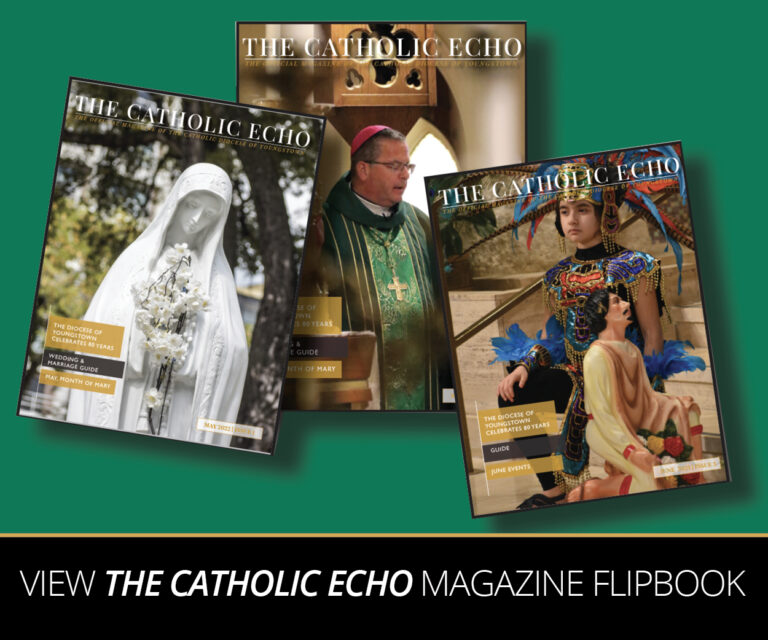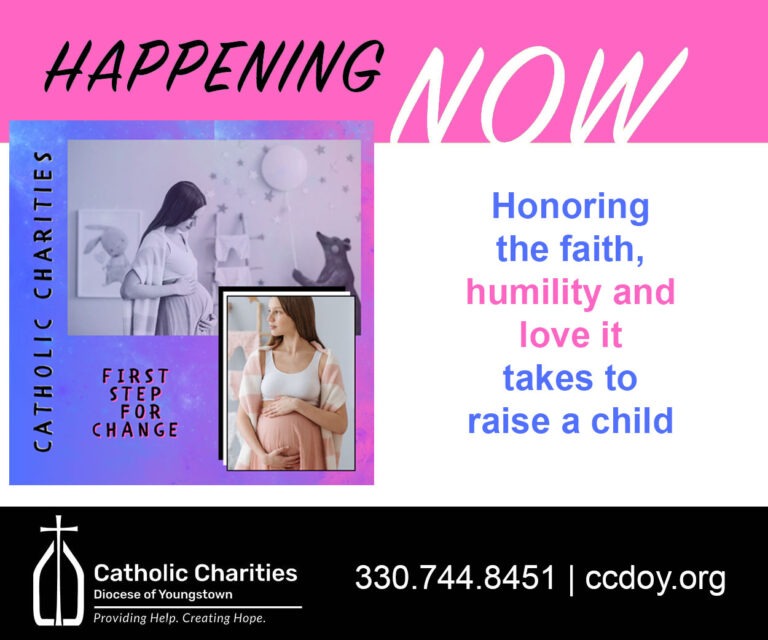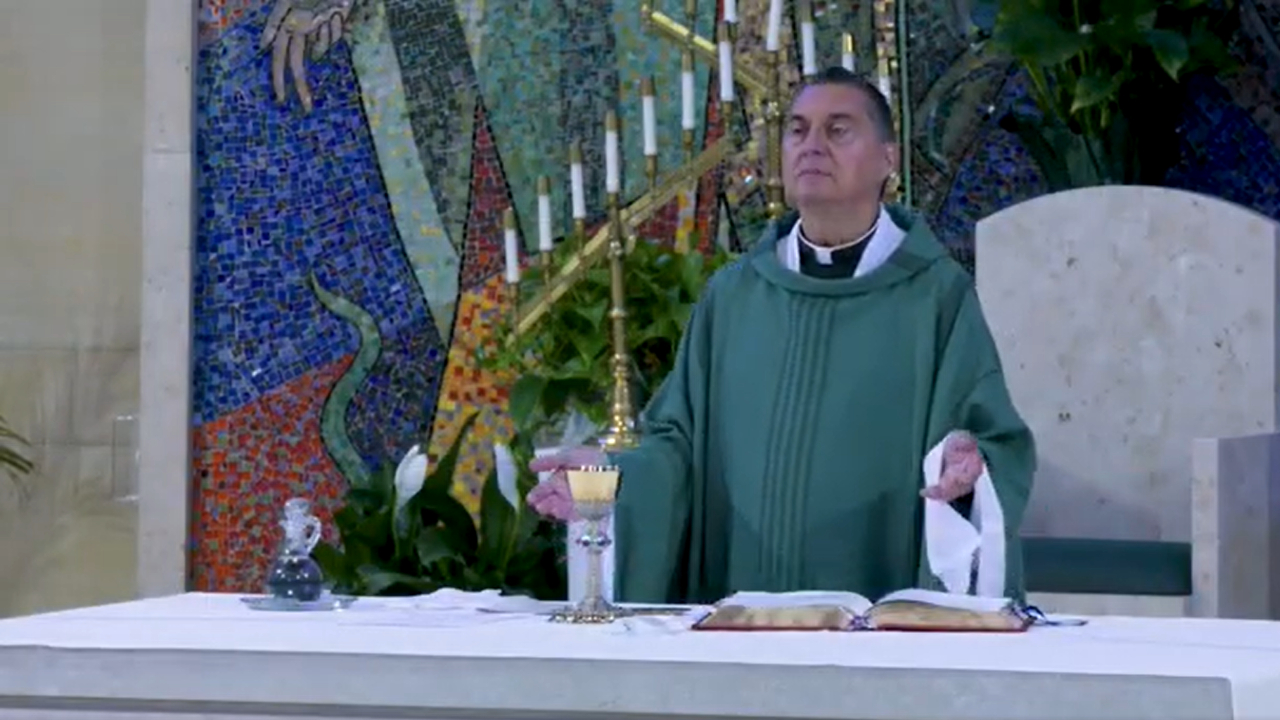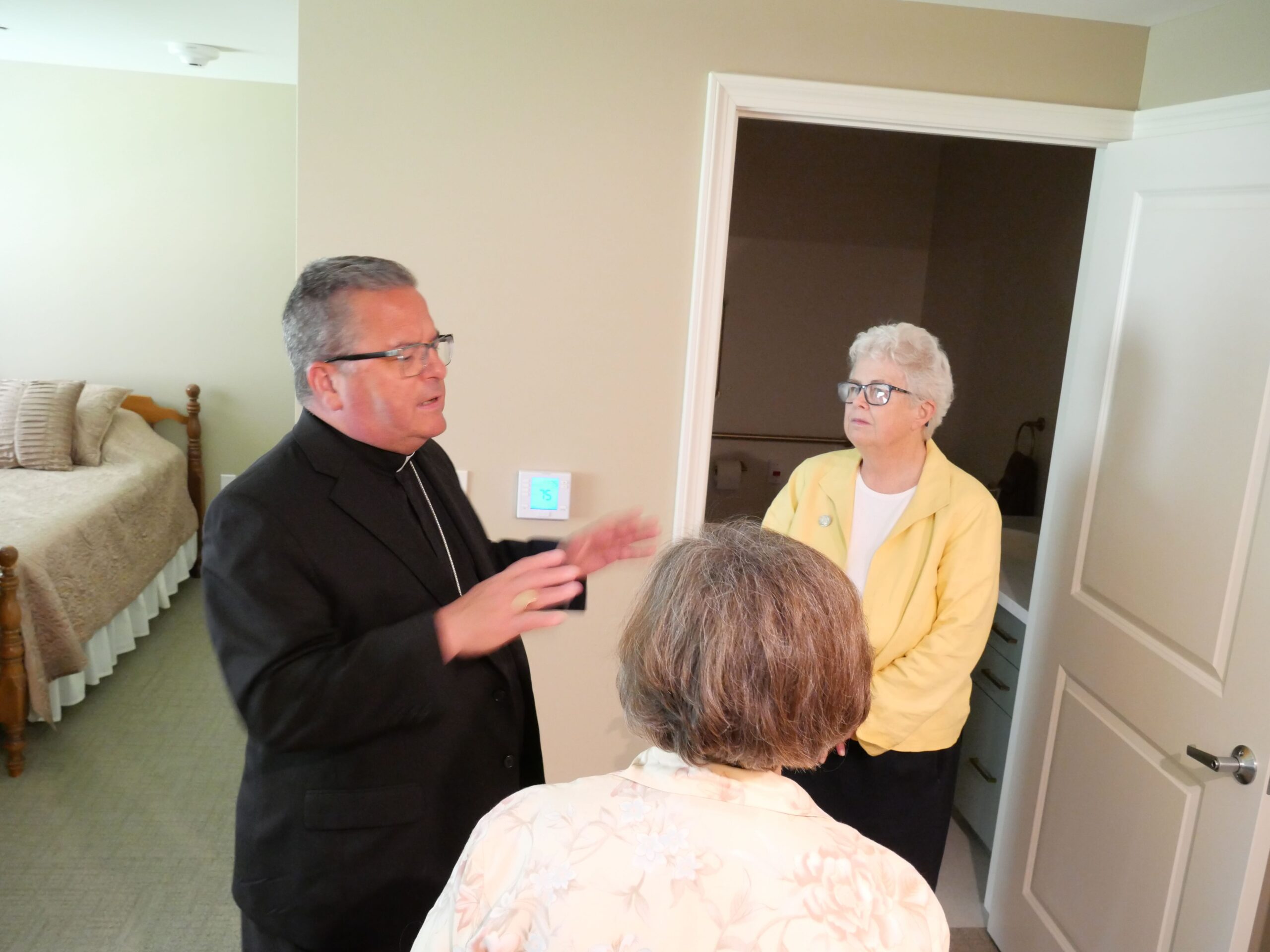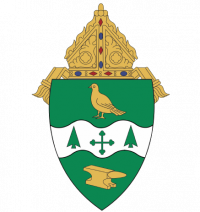If you talk to people who have undergone some significant journey, you might expect to hear words like “enjoyable” and “hardship,” but probably not both.
Yet, talking to local pilgrims who made The Camino de Santiago—a traditional pilgrimage to the shrine of the apostle St. James the Great in the Cathedral of Santiago de Compostela in Galicia, in northwestern Spain—you’ll find that those contrasting descriptions mingle easily.
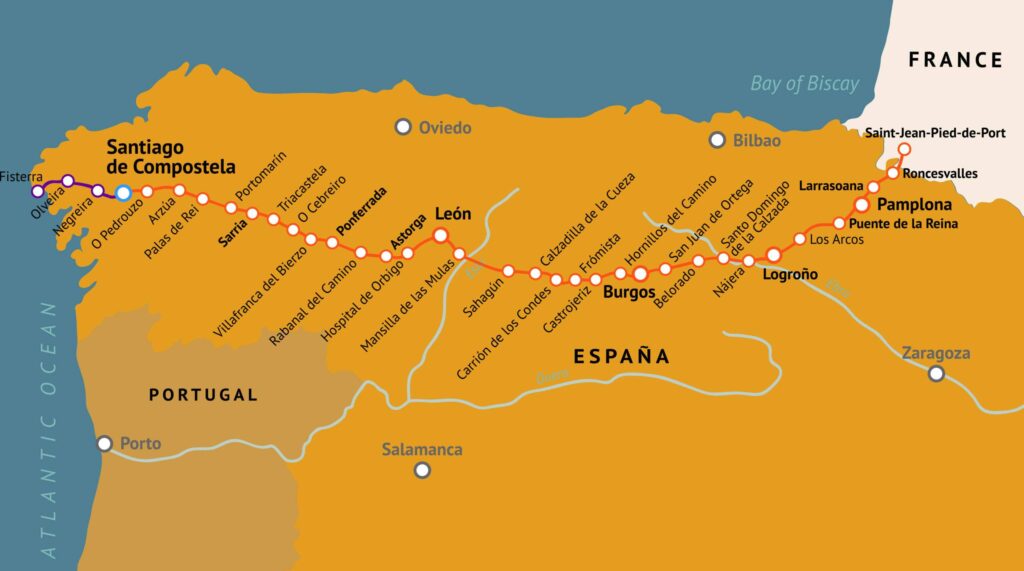
The Camino de Santiago, or “the Way of St James,” which has drawn pilgrims since the 10th century, came to the attention of American audiences in 2010 with the movie The Way, starring Martin Sheen and directed by Sheen’s son, Emilio Estevez. The Way was re-released last month, and earlier in 2023, a documentary, Santiago: the Camino Within, was also released.
“Martin Sheen in The Way could not have walked the Camino in his black leather shoes without having a horrible case of blisters,” joked Father James Daprile, a Diocese of Youngstown priest who retired from his pastorate at Our Lady of Perpetual Help Parish in Aurora in 2016. Father Daprile walked the Camino in 2009.
Local pilgrims recall traveling long distances—sometimes hundreds of kilometers—and experiencing acute pain, huge blisters, pulled muscles, exhaustion, fear of storms, physical obstacles and anxiety over finding a place to eat or stay for the night. But they also speak of incredible scenic beauty and gratifying connections with fellow pilgrims and a sacred tradition dating back centuries.
“And unexpected graces,” adds Barbara Bond, a retired Catholic school teacher who now works as a Title I remedial tutor at St. Nicholas School in Struthers. She and her husband, Jeff, completed the Camino in 2022.
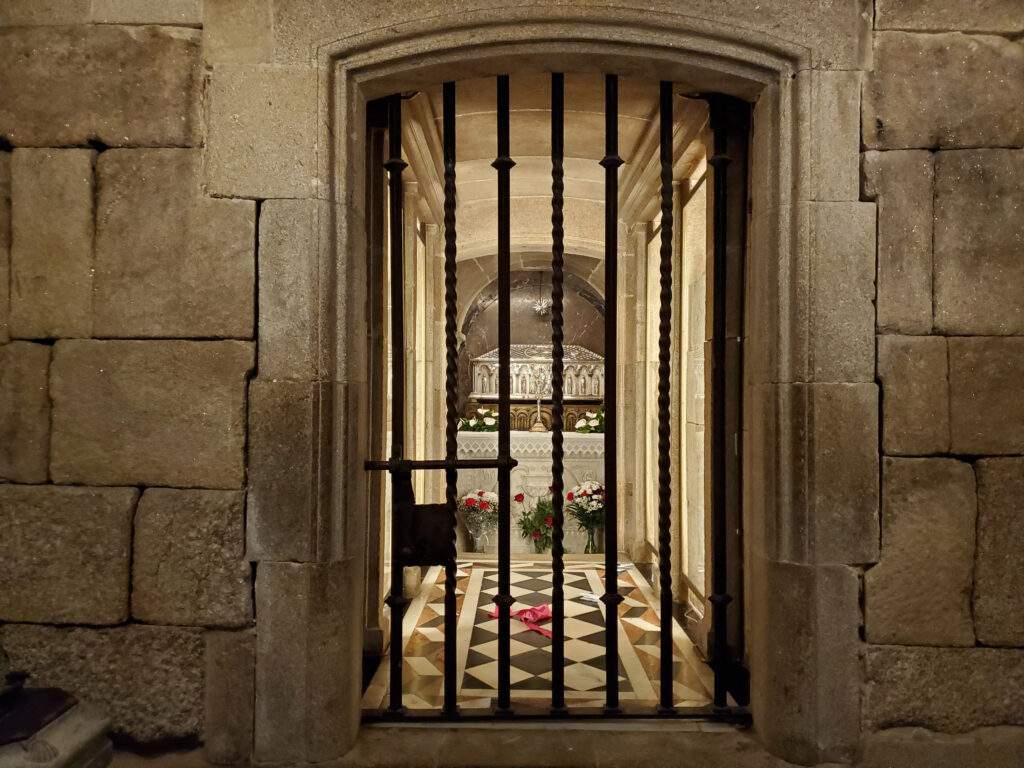
The Camino is a network of pilgrimages leading to the cathedral of Santiago de Compostela. There, according to tradition, lie the remains of St. James the Great—one of the first apostles called by Jesus, and the first to be martyred. St. James, also known as James of Zebedee, a fisherman and the brother of John, was beheaded at the order of King Herod, according to the Acts of the Apostles. (See the article on St. James in “Saint of the Season”).
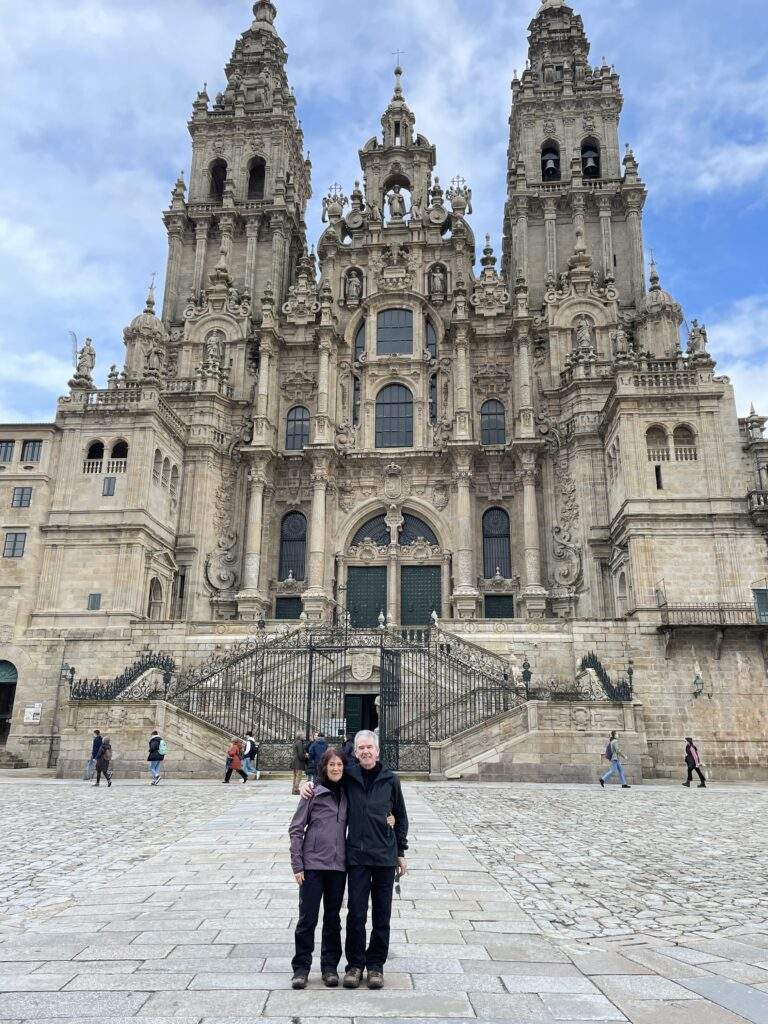
The cathedral has drawn pilgrims since the 10th century, with the discovery of St. James’ relics and their placement there. In 1492, Pope Alexander VI declared the Camino “one of the three great pilgrimages of Christendom,” along with Jerusalem and the Via Francigena, the ancient route that led pilgrims from Canterbury, England, to Rome.
The Camino features a dozen routes through different countries to reach Compostela, Spain—some beginning in England, but most going through France or Portugal on the way to Spain. Those making the pilgrimage represent different nations, various ages and different interests and motives. Most walk, but some go by bicycle, and some travel by bus. Some plan to go in groups and others to go alone or with one other person—but they end up traveling with others.
Barbara and Jeff Bond
“It’s being part of something that is a lot bigger than yourself,” said Jeff Bond, who practices acupuncture therapy in Warren. “When you are doing it, you are part of that spiritual heritage. You’re walking and praying. It’s very much being a part of the Church.”
He and his wife Barbara, parishioners at St. Dominic and Our Lady of Mt. Carmel parishes in Youngstown, made pilgrimages to Fatima, Guadalupe and Lourdes. “Any pilgrimage I’ve ever done has involved some degree of hardship—but this is by far the most,” said Jeff.
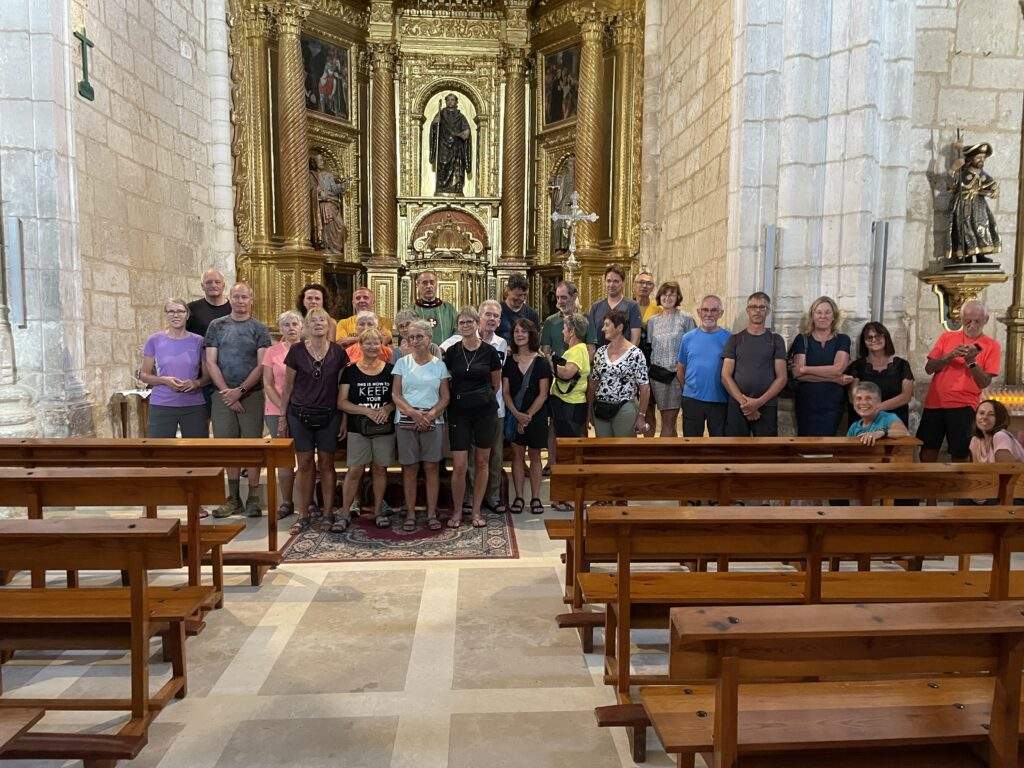
Barbara and Jeff chose to do the Camino “to grow closer to God,” Barbara said. They decided to make the pilgrimage over a year and a half, traveling “essentially in two-week segments. We do hope, when we are both retired, to do the Camino in one continuous pilgrimage.” So, after several two-week trips, their last segment began in Rabenal del Camino, Spain, around November 14, 2022, and ended at Santiago de Compostela 10 days later—on Thanksgiving Day.
For them, however, it was the first leg of their journey in July 2021—crossing the Pyrenees from France to Spain—that was the most difficult. “You climb for 20 kilometers, going up the mountain with no respite. I asked myself: ‘What have I gotten myself into? Is this even possible?’ But we did it,” Jeff noted.
“You’re offering all your suffering, blisters, pulled muscles,” Barbara said. Yet the pilgrims found encouragement from each other.
Barbara looks back on several memorable interactions, including meeting a woman from Lourdes who gave her a cross from her hometown, and the many wishes of “Buen Camino” from locals—a traditional greeting in the region for those making the Camino.
“You realize even more deeply that you are part of something larger than yourself,” Barbara said. “It was incredible.”
Anne and Tim Weeks
Anne Weeks, diocesan pastoral associate for Holy Spirit Parish in Uniontown, went on the pilgrimage in 2017 with her son, Tim, 24 at the time. Anne first started thinking about doing the Camino after experiencing a life-threatening stroke in 2006. “It entered my consciousness and it just stirred around in there for years,” she said. “I needed to connect the spiritual aspect of all that I had gone through, and the Camino seemed a good way to do that.”
They took a less-traveled route in Spain. Anne talked about how, at one point, they were part of a group of people that included very few English-speakers, but the connection that they found from their common journey and destination somehow united them. “We were able to have this wonderful conversation—about nothing and everything,” she said.

Anne also noted the sparseness of the experience: “Breakfast—usually at a little local restaurant—consisted of tea, toast and orange juice … a few of the towns didn’t even have a restaurant, so you had to rely on whatever provisions you brought along, or sometimes a food truck.” Generally, they found accommodations for the night in local hostels that they came across, which offered “a bed and a communal bathroom,” with beds grouped together in a large room resembling a barracks.
Like the other pilgrims, Anne and her son were struck by the beauty that they saw along the way—the hydrangeas, the crisp and clear water of the beaches and sand, the serenity of the forest, the elegance of the small towns—but also the obstacles and the difficulties. In particular, she remembers a eucalyptus forest near Compostela, which required them to walk over sharp and uneven rocks for several kilometers. “I felt every rock,” she said, adding that they got lost shortly after making it through the forest.
Yet, she felt a revelation as she endured the hardship. “All I could think of was, ‘Whatever pain I’m experiencing is nothing compared to the pain that Jesus suffered carrying the cross for me’ … I came to understand how much I can’t control, but must adapt to what is in my midst,” Anne said.
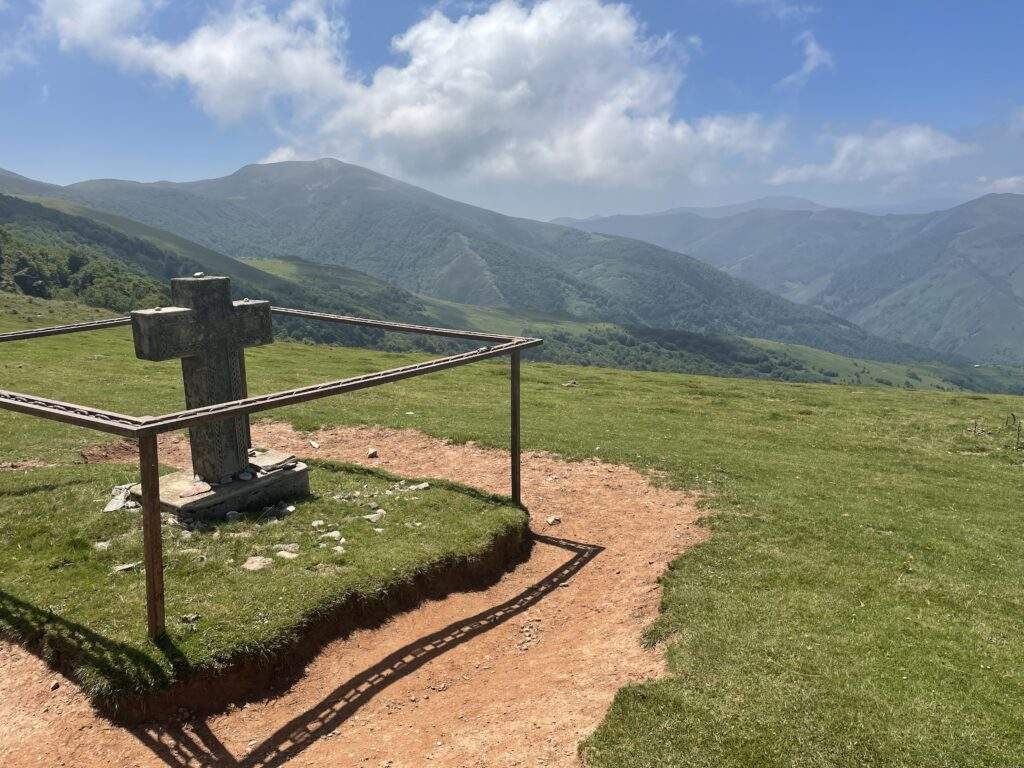
For Anne, the Camino was about being in the moment—as opposed to focusing on her pain, the next sight she was going to see or trying to catch up with someone in her group. “I just needed to be right here, right now, focusing on what was right in front of me,” she said.
When they finally reached the cathedral, they attended a Mass for pilgrims, which, for Anne, was an opportunity to begin processing the experience. At the cathedral, a tradition for pilgrims is to lay their hands on the shoulders of the statue of St. James and pray.
“I think some people knew what they wanted to come to say,” Anne said, yet she admitted it took her some time. “Eventually, I figured it out,” she added.
They decided to stay a few more days in Compostela. On their final night, they found themselves at the Church of St. Augustine. “They had just started praying the Spiritual Exercise of St. Ignatius. It just seemed to be the perfect end cap to pray with our fellow pilgrims.”
Anne said it allowed them to focus on “finding God in all things on our journey—the contentment and the peace. That was a real blessing.”
Jason Mitchell
“[The Camino] wasn’t a vacation,” said Jason Mitchell, a 2003 graduate of Central Catholic High School who grew up as a parishioner at St. Peter Parish in Canton. He is also a 2007 John Carroll University alumnus who went on to pursue graduate studies in nursing at Vanderbilt University. Now he works as a nurse practitioner in Raleigh, North Carolina.
Jason’s goal in completing the Camino was to “reignite” his prayer life. He learned about the Camino from his patients—about 80 percent of whom are Spanish-speaking—and other interactions with the Spanish-speaking community. He was planning to go in 2020, but the COVID-19 pandemic forced him to postpone until 2021. “We did everything safely,” Mitchell said with a chuckle. “Everyone was wearing masks.”

Of the various routes available, he chose the coastal route beginning in Guardia, in a mountainous region of Portugal near the Spanish border. The route ran 160 kilometers, “more than the minimum 100 kilometers needed to receive a certificate of completion,” Jason said. The route provided beautiful views of the ocean and beaches, the opportunity to swim—which he declined—and plenty of seafood along the way.
Yet his journey also had its obstacles. Early in his pilgrimage, he started out alone and faced severe weather, including storms with heavy rain.
“What have I gotten myself into?” he thought. “I really didn’t expect anything like that, so I had to pray.”
As he persevered and the weather cleared, Jason said “I ended up with prayers of gratitude. That experience taught me that sometimes the most beautiful experiences with God came after a period of fear and storms, great loneliness—maybe even danger. You just have to take that leap of faith. That part of the experience brought me closer to God.” Without such trusting, he said, “I don’t think that I would have been able to complete it.”
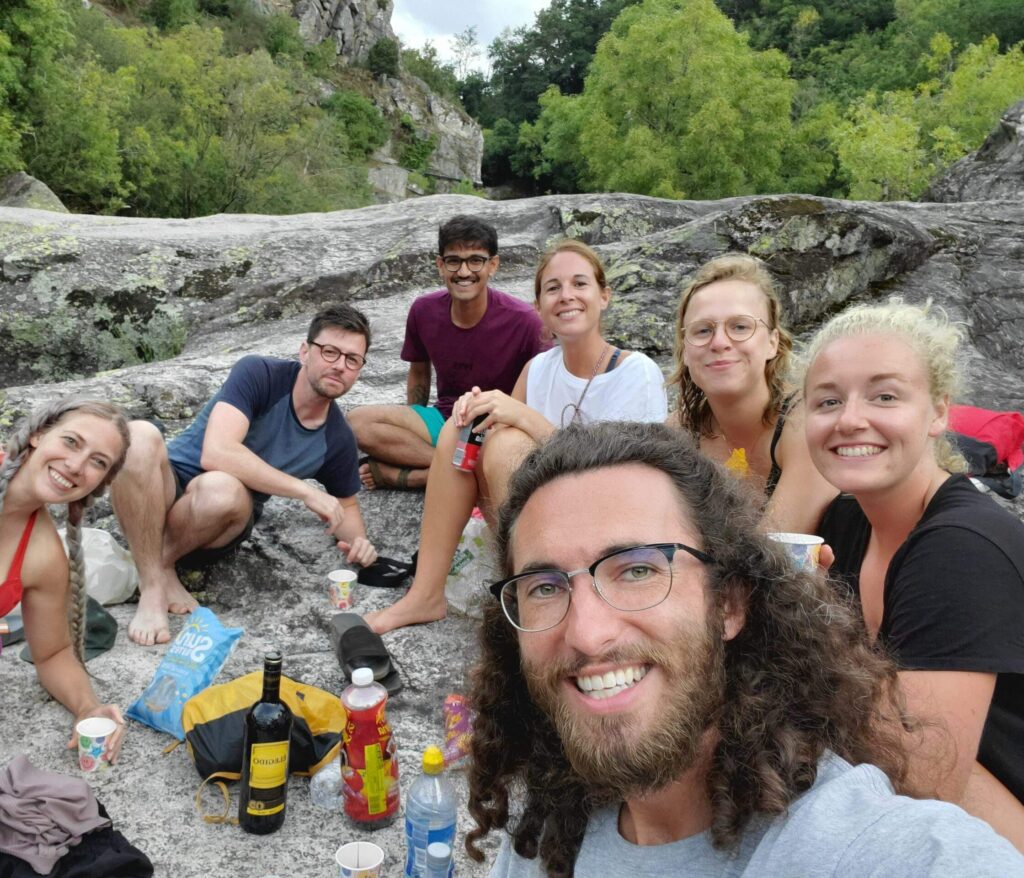
Later in the journey, Jason found himself in a group of pilgrims. “I ended the Camino with a group of about a dozen people. It was a loose group, and you would find yourself getting separated from some of the others. But as The Way flows, you find each other time and time again. I was meeting people from all over Europe—the UK, Czech Republic, France, Portugal, Uruguay, Germany. I met a priest from Padron, Spain, who blessed rosaries for me.
“Not everybody there is doing it for religion,” Jason pointed out, citing multiple motivating factors he saw in people along the way, including social and cultural goals, the desire to be surrounded by beautiful scenery and the opportunity for a physical challenge.
Yet the spiritual thrust from the many who travel by faith tended to draw the pilgrims deeper into the faith experience. “There is a sort of a spiritual rekindling from walking along the same path that other pilgrims had been walking for years.” Jason said, “It was beautiful to see how everyone interacted—the beauty of what something can be like when everyone has a common mission.”
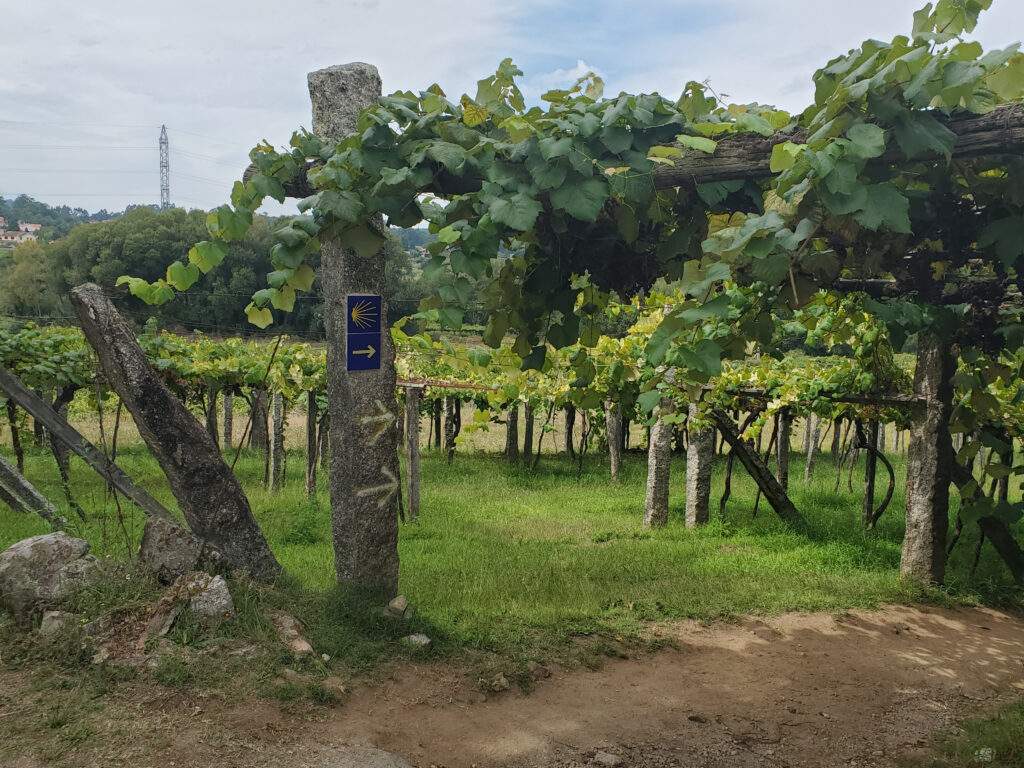
Alice Crosetto
Alice Crosetto, a parishioner at St. Columba Cathedral and retired teacher and college librarian, made the Camino with her sister, Norma Wheller, and a group out of Detroit led by Franciscan priests who had served at Our Lady Comforter of the Afflicted Shrine in Youngstown. They made the trip in 2004, the Holy Year of St. James, completing it on his feast day, July 25. She mentioned the intensity of the experience on the “physical, sensory and mental levels.”
Much of her and her sister’s motivation was to honor their father, who died on July 25, 1997.
Though Alice spoke of a less arduous journey than other pilgrims, she also noted the profound impact that her pilgrimage in 2004 had on her and those she traveled with.
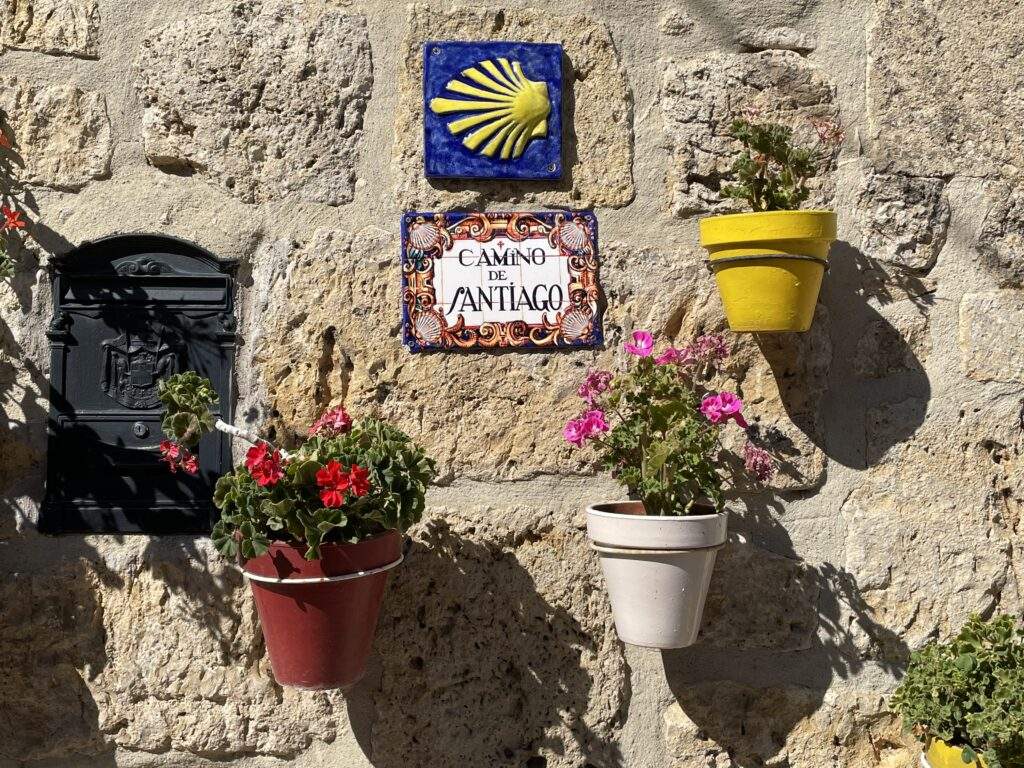
“It was a mature group, so we took a bus,” she said. Still, they got to see much of Spain and gain a sense of what the more traditional pilgrims were experiencing. They saw cathedrals, including the Basilica of St. Ignatius Loyola, Burgos Cathedral and eventually the Cathedral of Santiago de Compostela. “A pilgrimage like that has such meaning … seeing people—particularly young people with backpacks—making their way to Santiago was most moving. And there was such kindness. Everyone helped each other,” said Alice.
Despite the many pilgrims taking different routes, “we were all on the same pilgrimage—sharing the same spiritual experience—and doing all this to honor St. James and, ultimately, God,” she said.
Father James Daprile
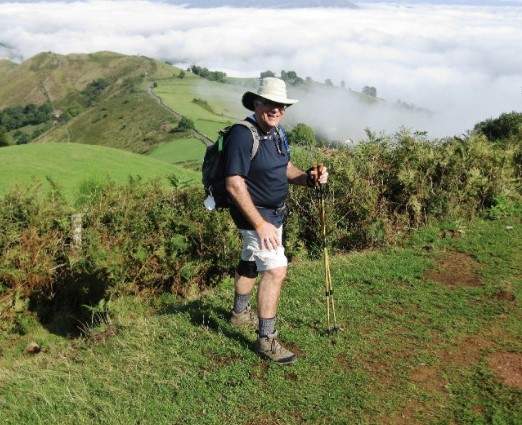
In 2009, Father Daprile was serving as pastor at St. Brendan Parish in Youngstown, and felt he needed a sabbatical after his many years in ministry. He decided to apply for a grant through the Lily Endowment, which is a foundation dedicated to community development, education and religion—in particular strengthening pastoral leadership across Christian communities in the U.S. Father Daprile was one of only three Catholics to receive a grant that year.
The money was dedicated to a program of renewal for himself and the parish, which he titled “Walking the Beauty Way,” based on the prayer: Today my heart will have harmony, my mind will seek balance, my eyes will look for good and find it, my mouth will whisper the words of gratitude. Today I will walk the beauty way.
The Beauty Way was three-fold. First, since he was pastor at St. Brendan Parish, Father Daprile spent three weeks in Ireland following the way of St. Brendan, while also organizing a presentation on Celtic spirituality for his parishioners. The Camino was the second part—he walked the French route of the Camino with his friend, Father Jim Schutte from the Archdiocese of Cincinnati, while his parishioners met on Saturdays in Mill Creek Park to walk and pray together. Finally, he spent a month in Santa Fe, New Mexico, learning to paint; meanwhile, he arranged a bus trip to the Cleveland Museum of Art for his parishioners. Each week he was away, he wrote reports for the parish bulletin—provided he had internet access.
“The Camino was amazing,” said Father Daprile, who self-published a book about his experience upon his return. “There was a symphony of sounds—birds and vultures singing, cows mooing, trees rustling, streams and rivers gurgling—a kaleidoscope of colors, a humbleness in walking where saints have trod … a worldwide camaraderie created with a Buon Camino, and a renewal of vision and heart. I really came back different.”
Unfortunately, a knee injury he sustained climbing Mt. Brendan in Ireland bothered him throughout his Camino experience. He recalls seeking medical care for it and was amazed at the response. “Because I had a seashell on my pack, indicating that I was a pilgrim, I was taken care of immediately and compassionately. In fact, all pilgrims were respected as we journeyed,” he said. “Language was never a barrier. Somehow, we found ways to communicate.”
Father Daprile’s advice to anyone thinking about doing the Camino is, “Do it. It’s transforming.” He added, “Prepare for it—break in a good set of hiking boots, practice a lot of walking, maybe up to 20 miles a day—persevere and get good information that gives realistic data. It’s also never too late to try! I met a man from France who celebrated his 80th birthday on the Camino. Relish the experience.”

